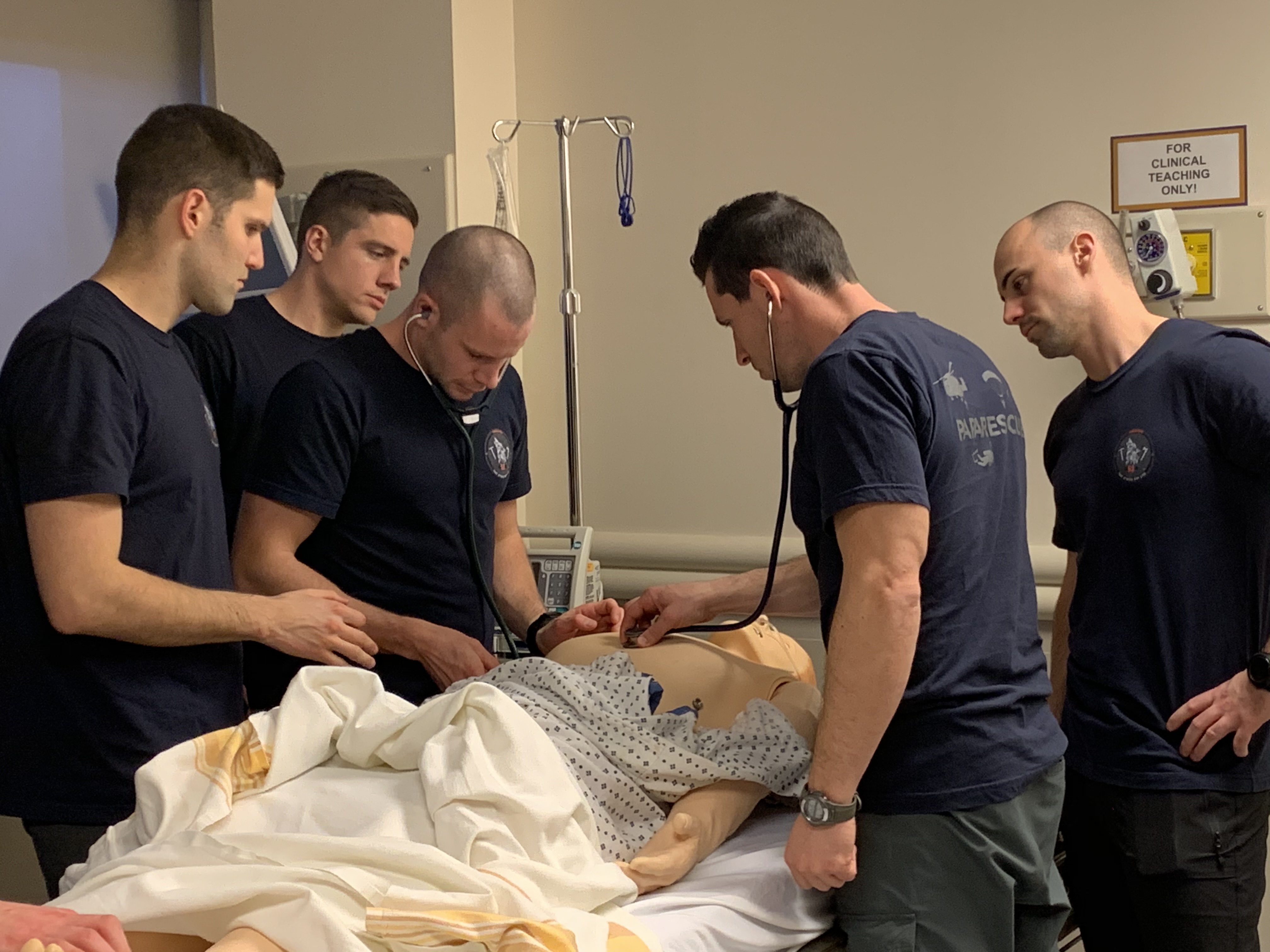Search and rescue technicians from the Canadian Forces School of Search and Rescue recently participated in hands-on simulation training at The Vic’s state-of-the-art Hearne Simulation Learning Lab.
The high tech lab offers medical professionals the ability to test critical thinking and decision making by simulating challenging and realistic scenarios. It was established in 2013 through the generosity of the Hearne family, supporters of The Vic Foundation, and Victoria Hospital.
Hearne Simulation Learning Lab Medical Director Dr. Thomas Jacob led the two-day training session in which participants practiced techniques in airway training and mass casualty incident response.
Dr. Jacob says simulation training complements the technicians’ formal education.
“Simulating real life scenarios and having the opportunity to break it down afterwards in detail gives people a much better understanding,” said Dr. Jacob.
Sergeant Mark Vokey, an instructor at the Canadian Forces School of Search and Rescue, found the training to be invaluable for his students.
“It gives students the opportunity to work with healthcare professionals in an environment where they are exposed to patients,” said Sergeant Vokey. “Any opportunity to interact with healthcare professionals is a great learning experience. It’s good to get different perspectives as it reinforces and bolsters the training that already exists in their training plan.”
Flight nurses from Lifeflight also began training in the Hearne Simulation Learning Lab this past October. Lifeflight is a 24-hour air ambulance program that transports critically ill or injured patients from areas outside a 200 kilometre radius of Winnipeg.
Lifeflight nurses volunteer their time to participate in simulation training.
“We go there because we want to learn and improve our skills,” said Paul Labao, who has worked as a Lifeflight nurse for the past five years. “The lab is phenomenal, very high tech. Thomas builds on our existing training and enhances it, making it more effective. The bottom line is simulation training really improves patient care and patient outcomes.”
Flight nurse Kevin Eckert says the lab has been instrumental in expanding his knowledge and readiness to provide patient-centered care in Northern Manitoba.
“Critical care is dynamic, multifaceted, and fluid,” said Kevin. “Situations and circumstances change rapidly requiring immediate assessment, intervention, and evaluation. Training in the simulation lab provides a safe environment to learn hands-on skills, participate in various simulation scenarios, and provides opportunities to debrief. The simulation lab at Victoria Hospital has helped prepare me to provide high quality patient-centred care as a flight nurse.”
Lifeflight and the Canadian Forces School of Search and Rescue represent just a handful of the over 400 medical professionals who have received training in the Hearne Simulation Learning Lab since its inception. Other groups and programs include the Internal Medicine Residency Program, the International Medical Graduate Program, Victoria Hospital Nurse Educators, the Winnipeg Critical Care Nurse Education Program, rural family doctors, and more.
Since the original design of the control and simulation rooms, the lab has expanded to include a mobile ultrasound unit and partial manikins (known as task trainers) for advanced airway training.
“We can match any simulation centre in terms of the level of sophistication,” said Dr. Jacob.
Dr. Jacob is currently exploring the possibility of developing training curriculum for various departments at The Vic and running high level simulations to help physicians and staff maintain and develop their skills.




